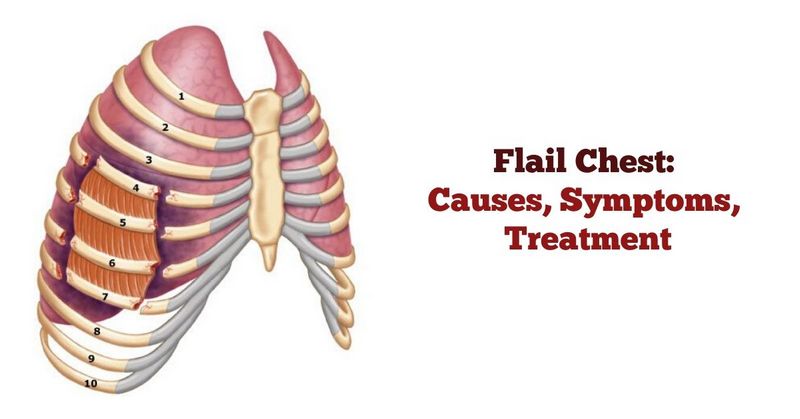
Flail chest is a life-threatening medical condition that occurs when a segment of the rib cage breaks due to trauma and becomes detached from the rest of the chest wall.
Classification by fracture localization
- Anterior bilateral: rib fractures are localized on both sides of the sternum on the anterior surface of the chest; the anterior chest section loses contact with the spine;
- Anterolateral: each rib breaks in two (or more) places on one side of the sternum along the front and side surfaces of the chest; the anterolateral chest section loses its connection with the spine;
- Posterolateral (dorsolateral): each rib breaks in two (or more) places on one side of the spine along the back and side of the chest; the posterolateral or posterior section of the chest loses contact with the spine;
- Rear bilateral (posterior bilateral): rib fractures are localized on both sides of the spine along the posterior surface of the chest.
Treatment
- Adequate pain relief using general anesthesia (including narcotic analgesics), novocaine blockade, anesthesia of fracture sites, paravertebral blockade).
- Restoration of the chest frame (required for anterior bilateral and anterolateral valvular fractures: fixation of the rib “window” to the external fixator for a period of 2-3 weeks; osteosynthesis of ribs; mechanical ventilation with increased pressure at the end of exhalation, which prevents the flotation of the costal “window”;
- Treatment of complications of rib fractures (elimination of hemo- and pneumothorax, fight against shock, etc.).
Forecast
Flail Chest is a life-threatening condition which can cause severe complications (mediastinal flotation, respiratory and cardiovascular failure, pleuropulmonary and traumatic shock). Even with timely and adequate treatment, mortality can be up to 39%.